If you’re looking to inject some serious power into your Harley-Davidson, then considering a Stage 4 upgrade might be on your radar. This high-level performance upgrade is designed to maximize the power and efficiency of your engine, giving you an exhilarating ride that truly stands out. The roar of the enhanced engine is music to the ears of motorcycle enthusiasts, and with a Stage 4 upgrade, your Harley is transformed into a beast on the road. But is it worth it for you, and how much is it typically?
Understanding the costs involved is crucial before you take the plunge. Typically, the average Harley Stage 4 upgrade cost is in a range between $2,500 to $4,500 for parts alone, with additional costs for labor if you opt for professional installation. The investment promises to vastly improve the power band of your motorcycle, offering top-end performance that’s hard to match. Remember though, the final cost can vary depending on your specific bike model and the parts you choose, so it’s worthwhile to shop around or consult with your local dealer to target the best options for your needs and budget. But – what else do you need to know?
Related read: 5 of The Absolute Best Harley Davidson Tuner Options Today
Explaining The Different Upgrade Stages
In this section, you’ll learn about Harley Stage Upgrades, which are systematic kits that enhance the performance of your bike. We’ll break down the differences between Stage 1, 2, 3, and 4 upgrades to help you make an informed decision.
What Are Stage Upgrades?
Stage upgrades are a series of performance enhancements that can be made to your Harley-Davidson motorcycle. Each stage targets different components of the bike, allowing for a gradual improvement in performance. The upgrades typically follow this sequence:
- Stage 1: Focuses on air flow and exhaust. This includes replacing the air cleaner and exhaust system and often remapping the engine’s fuel programming to adjust for the increased air flow.
- Stage 2: Centers on improving the camshaft (cams) that control the engine valves. This upgrade further enhances the engine’s efficiency and power.
- Stage 3: Involves upgrading the cylinder heads and pistons, increasing the engine’s displacement and compression.
- Stage 4: Completes the full engine build with more aggressive camshafts, a higher flow rate for the fuel and air into the engine, and often additional tuning.
Remember, every upgrade builds upon the previous ones; you won’t jump to a Stage 4 without first having the components from Stages 1 through 3.
Read more: Harley Stage Kits Explained, Compared, and More
Differences Between Stage 1, 2, 3, and 4
To give you a clearer picture, here’s a breakdown of the key differences:
- Stage 1:
- Performance Upgrade: Minimal initial performance upgrade.
- Components: Air cleaner kit and slip-on mufflers.
- Objective: Increase air flow and exhaust flow.
- Stage 2:
- Performance Upgrade: Moderate increase in performance over Stage 1.
- Components: Upgrade to camshaft kit for enhanced torque and horsepower.
- Objective: Improve intake and exhaust flow of the engine.
- Stage 3:
- Performance Upgrade: Significant boost in performance, with heightened horsepower and torque.
- Components: Larger displacement cylinders and pistons; reworked cylinder heads.
- Objective: Increase engine capacity for greater power output.
- Stage 4:
- Performance Upgrade: Maximum performance upgrade with notable changes in power and acceleration.
- Components: Full engine camshafts, high-flow injectors, and throttle body.
- Objective: Fully optimize the power and performance of your Harley.
As you consider upgrades, keep in mind that each stage not only adds power but also complexity and cost. Your choice should align with your desired level of performance and how you intend to use your motorcycle.
Components of a Stage 4 Upgrade Kit
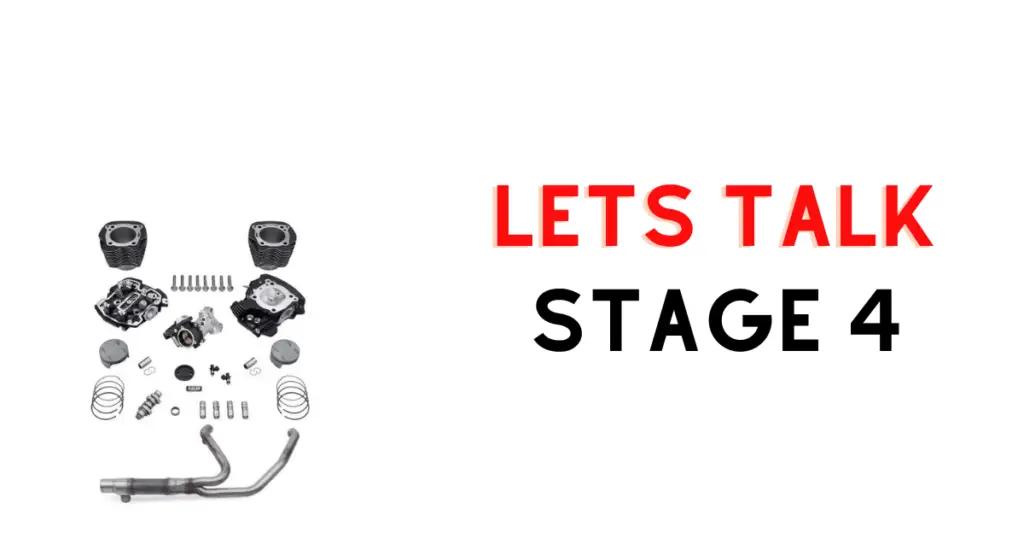
When you decide to upgrade your Harley with a Stage 4 kit, you’re looking at a comprehensive revamp designed to dramatically increase power and performance. Here’s a breakdown of the key components that typically come with such a kit:
High-Performance Cams
Your kit will include high-performance cams that are engineered to open and close the valves more aggressively. This change improves the engine’s ability to breathe and generates significantly more power, especially when paired with other engine modifications.
Increased Displacement Options
Upgrading to a Stage 4 kit often involves options for increasing the engine displacement. This is typically done through larger cylinders and pistons which provide a bigger combustion chamber for more power with every stroke of the engine.
Upgraded Air Intake and Throttle Body
A larger air intake and an enhanced throttle body are crucial for providing your engine with more air. The increased air flow, when combined with a high-flow air filter, ensures that more oxygen is available for combustion, which is necessary for the increased fuel your upgraded engine will be using.
Enhanced Exhaust System
Finally, to handle the increased output, your kit will likely include an enhanced exhaust system. This system is designed to expel exhaust gases more efficiently, reducing backpressure and allowing your engine to unleash its full potential.
By integrating these components, the Stage 4 upgrade kit transforms your bike into a high-performance machine, engineered to deliver the exhilarating ride you’re seeking.
Harley Stage 4 Upgrade Cost Considerations
When considering a Stage 4 upgrade for your Harley, there are several cost-related factors you should be aware of. From the price of components to labor and even unexpected expenses, it’s essential to plan your budget accordingly for a smooth upgrade experience.
Components and Kit Cost
Purchasing a Stage 4 kit and components is your first major expense. On average, kit costs can range between $2,500 to $4,500 depending on the brand and quality of the parts. Your kit usually includes:
- High-flow fuel injectors
- Performance camshafts
- High-compression pistons
- Performance cylinder heads
Note: Prices can fluctuate based on model year and availability of parts.
Labor Costs and Professional Installation
If you opt for professional installation, labor costs can significantly add to your budget. Installation fees for a Stage 4 upgrade can vary, but generally, you can expect to pay between $1,000 and $2,000 in labor. The advantages of professional installation include:
- Expertise: Trained technicians ensure the work is done correctly.
- Time-saving: Professionals can complete the installation faster than DIY.
Additional Hidden Costs
Be prepared for potential hidden costs that can arise during the upgrade process. These might include:
- Custom tuning (to optimize performance): Approximately $200 – $500
- Replacement of related components (which might show wear once the bike’s power is increased)
Hidden costs can surprise you, so it’s wise to set aside a portion of your budget, say 15-20% more than your anticipated spend, to cover any unexpected expenses.
Tuning Your Harley After Upgrades
After the installation, it’s time to fine-tune your Harley to handle the new performance parts. This step includes ECM remapping and possibly a dyno tune:
-
ECM Remapping: An essential process which adjusts the bike’s ECM to the new configurations. The Screamin’ Eagle Pro Street Tuner is often recommended for its compatibility with Harley-Davidson motorcycles and its ability to fine-tune the fuel parameters for your new upgrades.
Dyno Tuning: This is best done by a professional who will put your bike on a dynamometer, running it through various scenarios to optimize performance. Your technician will adjust the air/fuel mixture and ignition timing to make sure the engine delivers peak performance.
- Find the Best Tuner: Choose a competent technician with experience in dyno tuning Harley-Davidson bikes.
- Refine Performance: Allow the tech to make precise adjustments, achieving the best throttle response, fuel efficiency, and power.
Related read: Average Harley Dyno Tune Cost Breakdown (My .2 Cents)
Performance Benefits of Stage 4 Upgrade
When you upgrade to a Stage 4 kit, you’re allowing your Harley to unleash significant performance gains, particularly in horsepower and torque. This is a turning point for you if you crave that thrust of power and a noticeable improvement in the way your bike commands the road.
Horsepower and Torque Gains
A Stage 4 upgrade on your Harley is designed to maximize the rpm range during which your engine can produce power. The comprehensive package typically includes a suite of performance parts such as a high-flow air intake, aggressive camshafts, high-performance cylinder heads, and larger throttle bodies among other elements. As a result, you can expect a substantial increase in horsepower and torque. Typically, your bike might experience:
- A horsepower increase by as much as 50%
- A torque rise by approximate values of 30%-40%
This level of enhancement means your Harley will not just run faster; it will feel more powerful and responsive under your command.
Enhancements in Acceleration and Throttle Response
Boasting more horsepower means nothing without a crisp and aggressive throttle response. The Stage 4 kits are designed to improve the rate at which your Harley can accelerate, providing you with the ability to sprint from a stop much quicker. The internal engine improvements allow the bike to:
- Reach high RPMs more swiftly
- Respond to throttle inputs with more assertiveness
- Provide smoother power delivery for a superior riding experience
It’s not just about speed—it’s about how quickly and efficiently you can command that speed. The Stage 4 upgrade does exactly that, offering an exhilarating improvement in acceleration, giving you a thrill every time you twist the throttle.
How Does Stage 4 Affect Reliability and Warranties?
When you consider upgrading your Harley-Davidson motorcycle, it’s crucial to understand how it might affect your bike’s reliability and warranty. These factors can have significant implications for the care and cost of ownership over time.
Impact on Harley-Davidson’s Warranty
Upgrades, especially to the performance of your Harley-Davidson, can alter the terms of your factory warranty. A Stage 4 upgrade is complex, involving numerous high-performance parts, and often leads to the question: Will this void my warranty? It’s essential to know that unauthorized changes to the engine or other systems may lead to denied warranty claims. Harley-Davidson typically requires that upgrades be carried out by authorized dealers to maintain warranty validity.
- Authorized Dealer Installation: Preserves warranty but could be more expensive.
- Aftermarket or Self-Installation: Risky in terms of warranty, unless parts and procedures comply with Harley-Davidson’s terms.
Long-Term Reliability Concerns
Regarding long-term reliability, a Stage 4 upgrade pushes your motorcycle’s engine capabilities beyond its factory settings, which can naturally raise concerns about the bike’s longevity and dependability. While Harley-Davidson motorcycles are known for their robustness, significant modifications like a Stage 4 can introduce additional strain on the engine and its components.
- Regular Maintenance: Strict adherence to maintenance schedules is vital.
- Quality of Parts: Choosing high-quality parts ensures better performance and reliability.
- Riding Style: A more aggressive riding style might decrease long-term reliability following such an upgrade.
Remember, while upgrades can enhance your ride’s performance, they come with responsibilities regarding the care and potential impacts on your Harley’s factory promises.
Frequently Asked Questions
Upgrading to a Harley Stage 4 kit is an exciting next step for enhancing your motorcycle’s performance. Below, your key questions are addressed with succinct and informative answers to guide you in your decision-making process.
What components come with a Harley Stage 4 kit?
A Harley Stage 4 kit typically includes high-flow fuel injectors, performance cams, a larger throttle body, high-compression pistons, and a performance air intake. You’ll also find all necessary gaskets and bearings for installation.
Can you highlight the distinctions between Harley-Davidson’s Stage 3 and Stage 4 upgrades?
Stage 3 upgrades focus on increasing the displacement and air flow of your Harley engine, while Stage 4 takes it further with high-performance camshafts and matched components to maximize power output, especially at higher RPMs.
How much time does it typically take to install a Stage 4 upgrade on a Harley-Davidson motorcycle?
Installation time for a Stage 4 upgrade on a Harley-Davidson motorcycle can vary but usually takes around 8 to 14 hours, potentially spanning a couple of days, depending on the technician’s experience and the specific bike model.
Are there any additional modifications needed to support a Stage 4 upgrade on a Harley-Davidson bike?
To support a Stage 4 upgrade, you might need additional modifications such as an upgraded clutch to handle the increased power, and performance tuning to ensure your bike operates smoothly with the new setup.




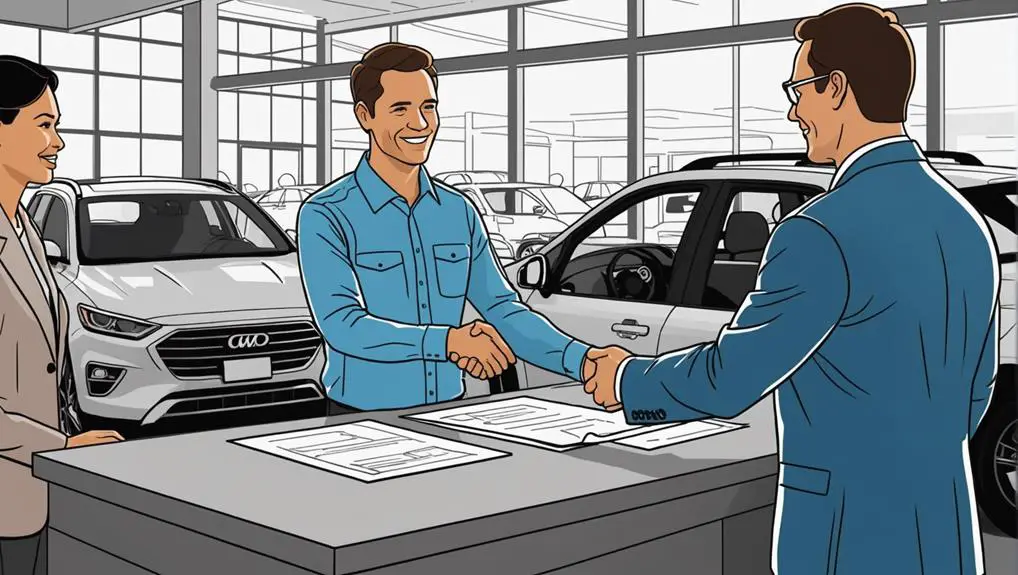
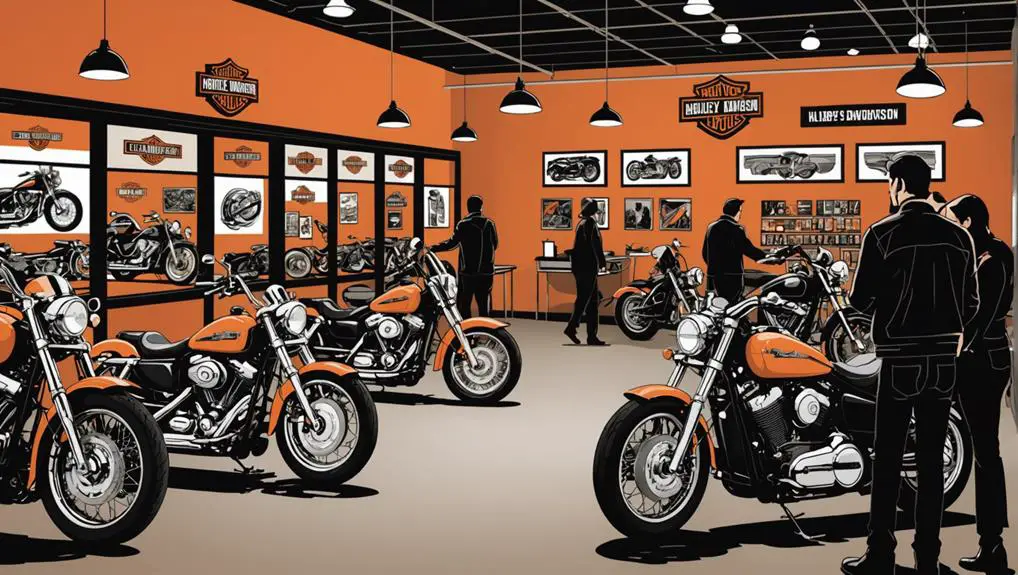
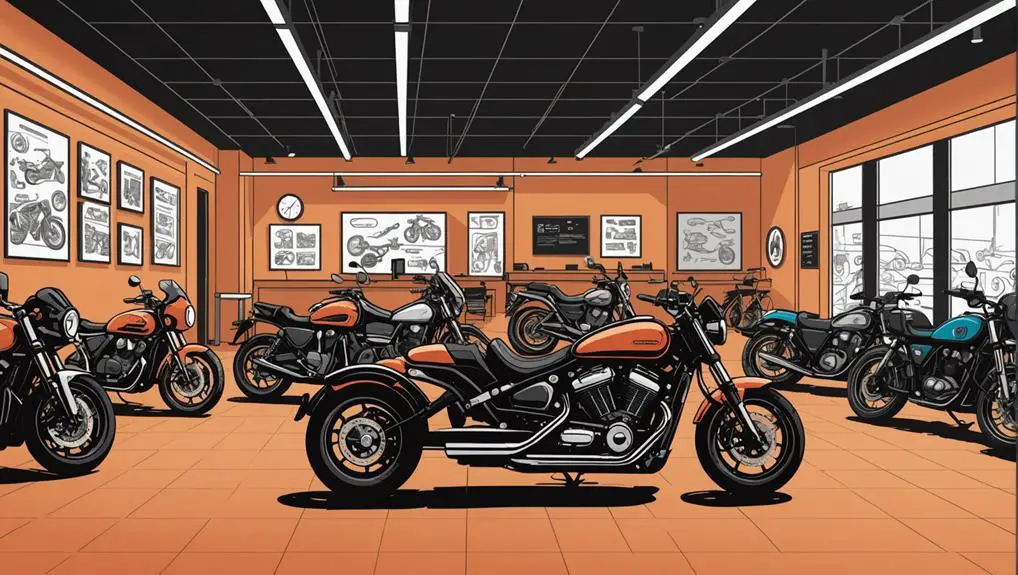
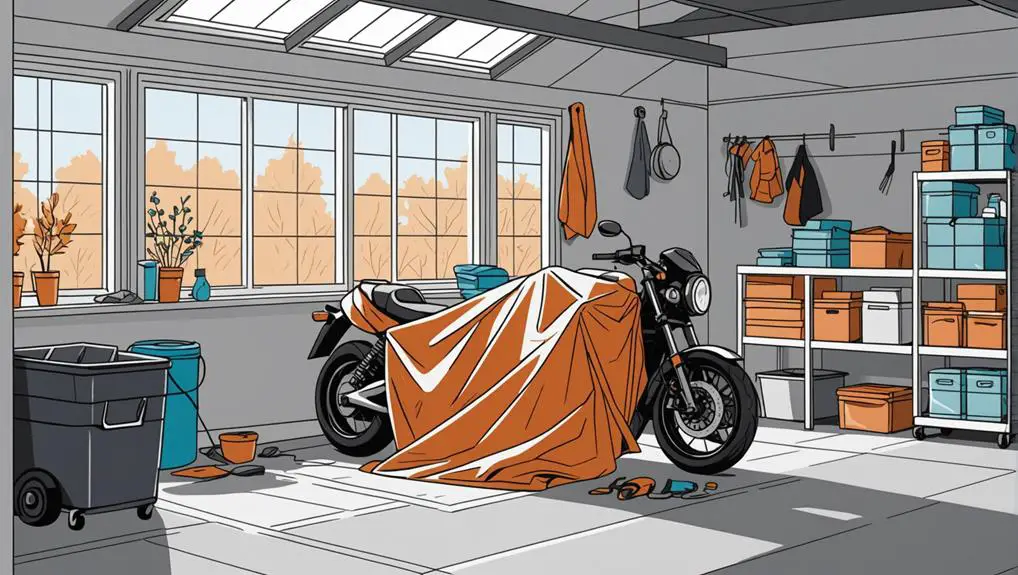
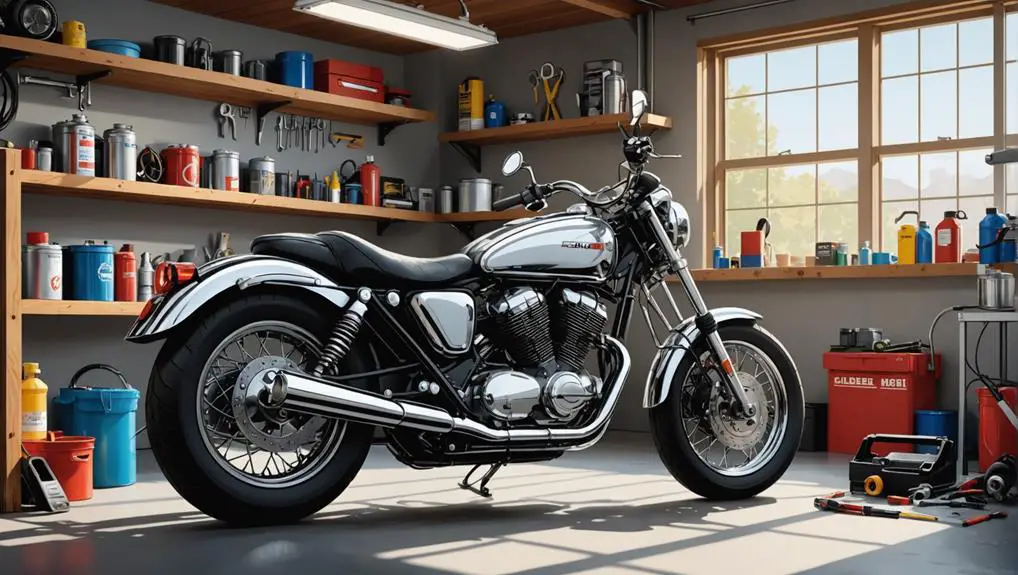
Leave a Reply
You must be logged in to post a comment.